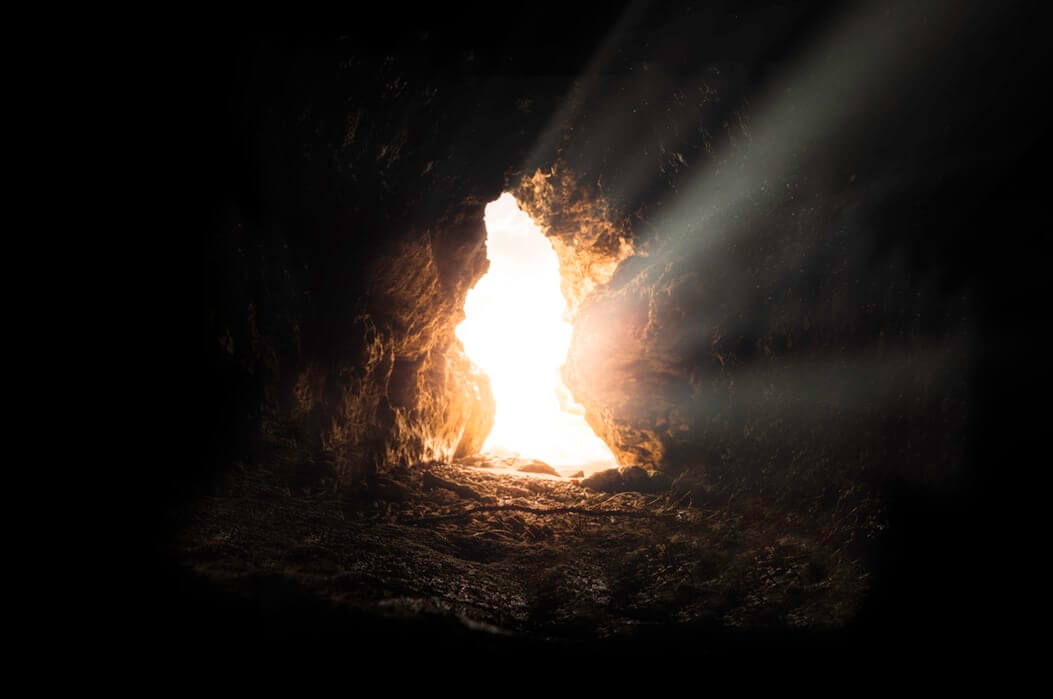On the southern coast of Kauai, a couple of miles into the Maha’ulepu Heritage Trail, sits one of the most famous archeological sites of Hawaii. Considered to be the richest fossil site in the Hawaiian islands, this natural sinkhole has been a subject of fascination for archeologists, geologists, naturalists and other scientists who have been tirelessly researching the area for decades now. This natural limestone cave, which ancient Hawaiians used to refer as “Smoke Eye”, is called the Makauwahi Cave.
Makauwahi Cave
Most people hiking along the Mahaulepu Heritage Trail, miss this dark hidden cave. Those who see it and muster the courage to venture inside, find that the scary, congested cave soon turns into a beautiful amphitheatre. It leads into an open, garden like area decorated with limestone walls, with natural patterns engraved all over them.
Scientists have found that the limestone rocks were formed due to cementing process of beach sand. The flow of the river through the caverns, years ago, led to erosion and subsequent collapsing of the cavern top, revealing the sinkhole with a freshwater lake inside.
If the cave looks familiar to you, yes, it has been featured in a Hollywood movie. In Pirates of the Carribean- Stranger tides, Captain Jack sparrow jumps from one of the cliffs of this cave.
Guided tours of the cave reserve are held four days a week from 10am to 4pm. Tours on other days may be available with prior appointment. A knowledgeable guide (usually a professional archeologist) will take visitors on an informative tour of the sinkhole revealing each and every detail. This is a good way to have a glimpse of life thousands of years ago, when the area flourished with rich foliage and various animal species. Some guided tours also include a tour of the tortoise farm nearby.
Makauwahi Cave Reserve
The site was discovered by paleoecologists David Burney and Lida Pigott Burney in 1992. The excavations that started soon after, revealed fossils and traces of pollen, seeds, invertebrate shells and many Polynesian artifacts. More than forty five species of birds and fish were found, over half of them extinct now.
Today, the cave reserve has more than 10,000 years of sedimentary record. The findings take us back to life on Kauai before the human colonization of Hawaiian islands. The scientists have also been able to understand how natural disasters like floods, hurricanes and tsunamis combined with the intervention of different human races affected Kauai.
The 17 acre cave reserve was acquired on lease by the Burneys in 2004 and later on subjected to environmental restoration. Armed with the support of Hawaii Tourism and thousands of volunteers, including school kids (and a few tortoises), the Burneys have managed to preserve and transform this ancient sacred site into a natural habitat for endangered plant and animal species. The team has successfully managed to bring many extinct plant species back to life. In David Burney’s words, “We are working to not just learn about the past but use these learnings to create a better future.”
Studies reveal that the cave was used as a grave site by ancient Hawaiians. The team has also found substantial evidence indicating maize and sugarcane farming being carried out in the area before.
Directions
There are two ways to access the Makauwahi Cave reserve. One way is via the 2 mile coastal trail from Shipwrecks beach. You’ll find the sinkhole located at the end of the trail, just after CJM stables.
The second option is a drive through a private property followed by a short hike. Drive past the Hyatt on Poipu Road. The road turns to dirt by the golf course. Go approximately 2 miles to a crossroads with gates straight ahead and on the left. Turn right and proceed to a green gate with a shack on the right. Turn right just past the shack. Drive along the edge of the field, continuing past a grey garden shed, and park on the left side at the bottom of the field, just past sign post 18. Don’t block the road or the horse trail.
To go to the cave, you’ll follow a trail – cross the footbridge, turn right and walk to signpost 15. The entrance is the small hole. Be sure to keep your head low until you are in daylight.
Visit cavereserve.org for a detailed map and for further assistance.
Conclusion
Following an exhaustive exploration of Kauai’s most revered archeological treasure, you can head over to Mahaulepu beach for a relaxing stroll.




Comments
Can I vist and spend the day at the beach